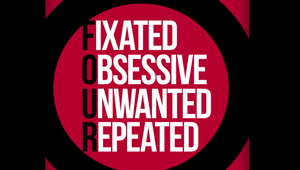
TikTok Envy: Everybody Wants to Be TikTok, But at What Cost?

We’ve all noticed it. Kim Kardashian has noticed it. Your favourite social media platforms are suffering a crisis of identity. The once confident halls of Meta HQ now ring with insecurity. Every day they ask, “How do we get what TikTok have?”. TikTok envy is rife, and everyone is clamoring to get in on the action. But what are they willing to sacrifice to get there?
Why does everyone want to be TikTok?
The numbers speak for themselves. In 2021 TikTok was the world’s most visited website, with over 1.5 billion monthly active users. Its value has skyrocketed to over $360 billion while other platforms dwindle or stagnate. The amount of video creators on TikTok amounts to 870 million people, over 1,000 times bigger than the workforce of the entire film industry. To really understand its success, it’s important to understand the kind of platform TikTok really is.
Professor Scott Galloway posits that “TikTok is only masquerading as a social media company; it’s a streaming company first and foremost”. Consuming video content is the primary function of the platform, with the expectation that likes and shares will follow. So although Facebook and Instagram are in a panic about their new younger competitor, it’s platforms like Netflix, Amazon Prime and Disney+ who are the competitive benchmark.
“We’ve been watching the streaming wars for the past few years, but we were looking in the wrong place.”
Comparing TikTok to other video-first streaming platforms, its blistering performance is even more evident. TikTok spends a fraction of Netflix’s budget on content ($200m vs $17b) per year, whilst generating more revenue and attracting more users. This success can largely be attributed to the understanding of one thing; Attention.
TikTok’s attention economy
TikTok now commands more attention per person than all of Meta’s platforms combined. Of all major social and streaming platforms, they more than anyone else, have built their model around attention first, social and data second. This ethos of ‘get them watching, and the data will follow’ has served them incredibly well, and we can see the same trend hit other platforms with their overwhelming pivot to video content. However, TikTok understands attention more intimately than their rivals; video-first alone won’t win you the attention prize. The final boss they’ve defeated has been a long-held virtue in consumer circles: Choice.
TikTok understands choice
We’ve all been there. You’re on Netflix, and you’ve been scrolling mindlessly through tiles and trailers for a shameful amount of time. You could have watched half an episode of something by now! TikTok firmly understands that when it comes to attention, choice is a curse, not a virtue. Choice paralysis and decision fatigue are endemic in our society, and TikTok’s continuous stream of non-stop content is the perfect ointment.

What have platforms done to try and get there?
The natural inclination for any business is to look at TikTok’s success and figure out what they are doing so well to get there. However, the trap that many fall in to here is believing that they should adopt their features and format at face value, rather than taking the time to understand why people flock to them in the first place. Instagram, YouTube and Netflix - Reels, Stories, and ‘Laughs’ respectively, all potentially dilute the primary appeal of their platform; eventually they’re all just doing the same thing and recycling the same content.
Why is that damaging?
By adopting features so indiscriminately, these platforms risk cannibalising the reason people came to them in the first place. Video content isn’t going away any time soon, but don’t forget what made you famous. We can already see these platforms understanding this misstep, with Instagram Head Adam Mosseri acknowledging that they’ve “gone too far pushing video”, endeavoring to make a concerted effort to pivot back to photos and stills in 2023. To stay relevant, it is essential that platforms like Instagram push and maintain a unique marker of difference – else they risk going the way of the dodo.
How does this impact marketing?
In the marketing world, the greatest impact is on our output and effectiveness. A social media landscape that only churns out a specific type of video content significantly limits the scope of what brands can achieve – what’s the point in having different platforms in a media plan when they all do the same thing for their audiences? Video is amazingly potent, but it can’t be a panacea for content – particularly for brands.
Instagram’s active acknowledge of its over-reliance on video gives me hope that we’re not past the point of no return – it’s essential that we conserve a social media world that has a broad offering for both consumers and advertisers.










